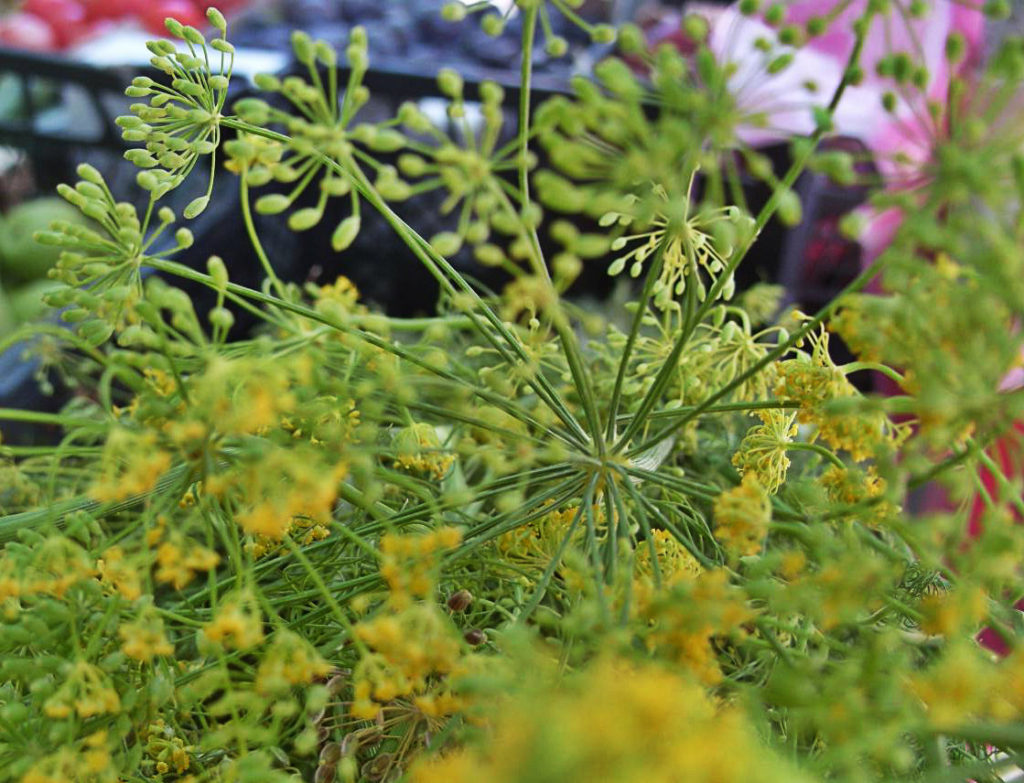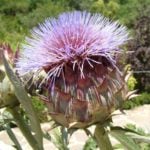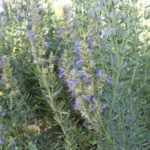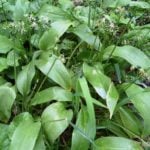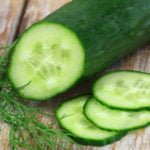Dill has a well-known strong “kitchen” smell. And somehow it is hard to believe that the aroma of dill in ancient Greece competed with the aroma of roses. It was woven into wreaths, and the famous Greek poet Sappho sang of this plant in verse. In the Middle Ages in Italy, a sprig of dill was considered a symbol of love: lovers gave it to a loved one to express tender feelings without words. Perhaps this tradition was not accidental, because even earlier dill was ranked among the herbs that excite love desire.

Anethum Graveolens is an annual herb with an erect, rounded, branching stem, 70-100 cm (2.3-3.3 feet) tall. The leaves are twofold to fivefold with filamentous lobes. The flowers are small, yellow, in complex umbels; they bloom in June-August. The fruits ripen in July-August.

Homeland of dill: North Asia, Africa, America. Today it is a widely cultivated and wild-growing spicy, medicinal, and also very ornamental plant. Young leaves, stems, buds, and fruits are used as food (as a seasoning for salads, first and second courses, marinades, and pickles).
For the purpose of treatment, use fruits that have an expectorant, carminative, sedative, diuretic, diaphoretic, laxative, antispasmodic effect. They are also recommended for diseases of the abdominal cavity, anemia, hypertension, arrhythmia, coronary insufficiency; dill seed preparations are used to improve appetite, digestion, metabolism, and so on.
Dill oil is used for hypertension, heart diseases. It relieves spasms of the gastrointestinal tract, reduces the processes of fermentation and putrefaction in the intestine, reduces gas formation, has a laxative effect. It is recommended for inflammation of the urinary tract, gout, loss of appetite, lung diseases, influenza, stomach pain; it can be used to improve digestion and as a diuretic, lactogenic, anthelmintic.
Method of application: aroma lamps-1-3 drops, baths-2-3 drops, massage-2-5 drops per 1 g of base oil; inside-2-3 drops with honey. Please consult your family doctor before using!
Dill is a light, delicate plant that gives airiness to any composition. When growing young greens, it is recommended to place it on the garden soil as a sealer for green or early root crops (for example, radishes, lettuce, carrots). Dill is suitable for high beds or for edging beds with cut greens at least three times a season. When growing from seeds, it is better to plant it on a colorful lawn, where its umbrellas will serve as a companion element, providing restrained yellow tones during the flowering period.
Distance between plants: 0.5-1 cm/0.2-0.4 inches (for greenery), 12-15 cm/4.7-5.9 inches (for seeds), between rows – 6-10 cm (2.4-3.9 inches); sowing depth 1.5-3 cm (0.6-1.2 inches).Dill prefers loose chernozem, fertile sandy loam and light loamy soil.
